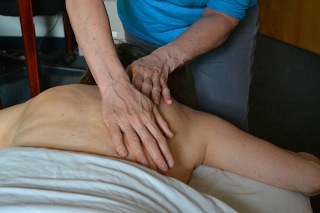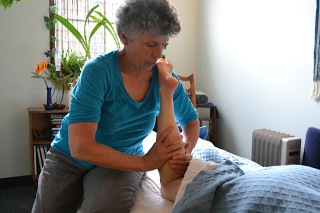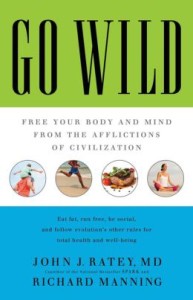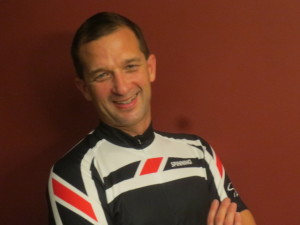STAY ON WHEN YOU’RE OFF – Unfortunately most active people, at some time, are derailed by illness or injury. More painful than the condition is the fact that these folks, who love to be up and about and pursuing their sport or exercise, are forced to take a break. Sentencing an athlete to sedentary rest is not what anyone wants.
It happens; though with the enormous strides made in medicine, physical therapy and training, alternative exercise is more often available. But these are alternatives. Facing 4-6 weeks away from exercise routines or sports specific training is daunting. The challenge is to remain optimistic and logical when feeling overwhelmed. The trick is to maintain what is safe, fuel appropriately, snag some extra sleep and be positive.
What is referred to as the “off season” for sports or conditioning, is that period of time just following the final race or event of the season stretching all the way to the start of the equivalent of pre-season, usually 4-8 weeks. An injured athlete faces down time much the same as a competitive athlete in his or her off-season or a recreational athlete whose favorite sport is seasonal and done for the year. The smart individual will look at this mandated time off as a significant part of training. In fact, some suggest that it is the most important piece of the whole.
Off-season is not the time to reduce all conceivable levels of fitness to zero. Though an initial week of zoning out and doing not much of anything might be called for depending on the previous season’s stresses, the remainder of the time should be devoted to activity that first heals and then prepares the body for what is to come.
Off-season is an excellent time to assess one’s overall strength and flexibility. Are there any problem spots, any weaknesses, any imbalances? Correct these now and help prevent overuse injury later. As you resume exercise, pay particular attention to working opposing muscles groups and a balanced mix of moderate cardiovascular exercise.
Off-season means you DO have time to play. You want to maintain about 50-60% of your conditioning and active play will help you do so as you relax your mind and loosen your tight hold on discipline.
Off-season is a great time to take some classes, work with a personal trainer who understands your sports and conditioning needs, make friends with a Concept2 rowing machine, explore new areas on foot, snowshoes or skis, and buddy up with friends or family for active hours that will remind you why fitness is your personal choice.
A word about the holidays – Apply the same skills that you apply to your training. Pace yourself. Finish strong.
While you’re at it, remember to reach out to others. A helping hand offered to those running the race, so to speak, along with you means a boost to your own energy, capability and, yes, joy.
EATING THROUGH INJURY AND HIBERNATION
by Kimberly Evans, MS, RD
Many active people are challenged to figure out how to eat when training stops. And let’s face it at some point in time training does stop. There are many obstacles to training even under the best of circumstance. For one thing, seasons change. That is how things work in Vermont, and unless you are an athlete with a year round training program, sometimes this means a pause in training.
And then, even the best athletes get injured. So you see, for one reason or another despite best intentions sometimes training stops.
When a change in weather or an injury stops an athlete’s training program they often struggle to figure out how to eat in response. As a dietitian who works with a variety of athletes, I have seen things go one of two ways. Training stops but eating remains unchanged, or training stops and so does eating. The writing on the wall is pretty clear here; neither of these scenarios leads to good outcomes.
When training stops and eating remains unchanged this typically leaves behind a deconditioned athlete with unwanted pounds. This makes it difficult, emotionally and physically, to bounce back. And, on the flip side, when a change in training results in an overly drastic decrease in eating, this too leaves an athlete deconditioned, with little energy, and in less than prime shape to jump back into the game.
So, while it is true a decrease in activity means you need fewer calories, it may not be quite as few as you think. Many formulas used to calculate calorie expenditure during exercise, for example the standard 600 calories per hour, grossly overestimate calorie burn. As a result, this leaves many injured athletes needlessly cutting excess calories during down time.
This is one of the most common mistakes injured athletes make, not eating enough for fear of unwanted weight gain. An overly restricted diet can result in prolonging an injury by not giving your body what it needs to heal.
This means that when the ice melts or that injury heals you are more deconditioned than you expected to be because of muscle loss that comes with an excessive calorie deprivation.
Here is the word of caution to sidelined athletes, please be diligent in continuing to take in adequate calories, especially from nutrient dense foods. Some foods you will want to make sure to continue to include on your plate are sweet potatoes, kiwi, salmon, walnuts, eggs, and berries. Bottom line, athletes need to eat well when training, and when recovering.
Injury aside, when workouts become less demanding eating needs to be adjusted. Continuing to eat like you are training intensely, while your are actually at rest during the off season will only result in one thing, unwanted weight gain. But not so fast. Weight gain does not need to be an unwanted side effect of changes in a training plan if you plan correctly.
First of all assess the duration of your off time. If your training will be sidelined for a week or less, it is likely that no real changes need to be made to your eating. When it looks like things will be off track for a week or more a modest reduction of about 300 calories will likely keep things in check.
Secondly, now may be the time to reduce your carbohydrate intake slightly. It is true that most athletes can get away with, and need, more carbohydrates. During off season pull back a bit and create more space on your plate for protein rich foods such as tofu, chicken, eggs, salmon, Greek yogurt and high protein grains like quinoa. This will keep both your tummy and your body happy at the same time.
Another great strategy can be paying attention to the timing of your eating while in your down time. Keeping eating limited to nine to twelve hours of the day at three- to four-hour intervals, as opposed to the graze-all-day plan, has proven to have positive impacts on weight according to some recent research.
In addition to following this nutrition advice, regardless of why you are less active, this might be a great time to try something new. Weight training, yoga, and meditation all show great benefits for the active person.
Yes, injury, weather related hibernation, family commitments and holidays could be a little bit of a game changer for the active person. However, a sensible approach that is not too extreme will keep you on the right road to successfully getting back on track to being your awesome active self.
Kimberly Evans, MS, RD, co-owner Peak Physical Therapy Sports and Performance Center and Whole Health Nutrition, Williston. To contact Evans, go to RD@wholehealthnutritionvt.com
To view the newly published e-book, Breast Cancer Superfoods, coauthored by Evans, go to www.breastcancersuperfoods.com.
















